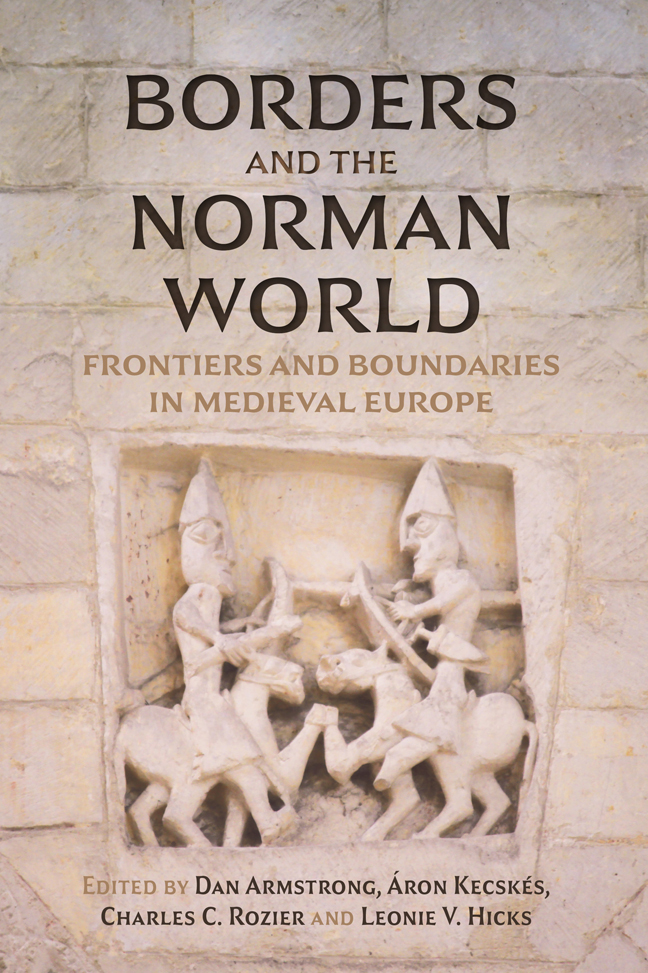Book contents
- Frontmatter
- Contents
- List of Illustrations
- List of Contributors
- Acknowledgements
- List of Abbreviations
- Naming Conventions
- Maps
- Introduction: Writing the Borders of the Norman World
- Part I Borders in and Around the Norman World
- Part II Ecclesiastical Borders
- Part III Conceptual Boundaries
- Afterword: Borders, Landscapes, and Seascapes
- Select Bibliography
- Index
Introduction: Writing the Borders of the Norman World
Published online by Cambridge University Press: 22 February 2024
- Frontmatter
- Contents
- List of Illustrations
- List of Contributors
- Acknowledgements
- List of Abbreviations
- Naming Conventions
- Maps
- Introduction: Writing the Borders of the Norman World
- Part I Borders in and Around the Norman World
- Part II Ecclesiastical Borders
- Part III Conceptual Boundaries
- Afterword: Borders, Landscapes, and Seascapes
- Select Bibliography
- Index
Summary
The Late Eleventh-Century Chronicler Geoffrey Malaterra called the Normans a ‘most unbridled people’, whose hunger for conquest and domination scattered them across the face of the Earth. Indeed, the familiar maps provided in modern studies showing zones of Norman activity in the eleventh century contain coloured regions from Ireland to the Levant, bearing testimony to the verity of Malaterra's assertion. The question of borders is quick to arise when studying such a map: one might ask why borders run in certain places and not others, or what these borders meant on the ground.
The thirteen chapters of this volume present a variety of approaches to the borders and frontiers in and around the Norman World during the eleventh and twelfth centuries. Many of the chapters highlight the instrumental nature of these borders and frontiers, as tools of selective inclusion and exclusion deployed by a variety of actors. In so doing, we intend to build upon a rich literature on medieval borders and seek to utilise the Norman World as a focused testing ground for examining the use, nature, and concept of borders and frontiers during a crucial period in the formation of Europe. The aim of this volume is thus twofold: on the one hand, to provide a study of the borders of the Norman World, and on the other, to show how perceiving borders as instruments opens up new vistas of research for the historian. This Introduction commences with an overview of the historiographical developments concerning medieval borders and frontiers, followed by a brief consideration of the term ‘Norman World’. We then set out the goals and chief findings, concluding with a brief overview of the volume's contents.
Borders and Frontiers
And what is a border, if not a story? It is never simply a line, a marker, a wall, an edge. First it is an idea. An idea that is then presented as reality. It doesn't just exist in the world. It can only ever be made. It can only ever be told.
Borders are all around us. They come in many forms, shapes, and sizes. They are not static, nor do they simply divide – they move, and they create.
- Type
- Chapter
- Information
- Borders and the Norman WorldFrontiers and Boundaries in Medieval Europe, pp. 1 - 14Publisher: Boydell & BrewerPrint publication year: 2023



